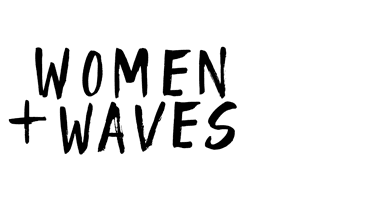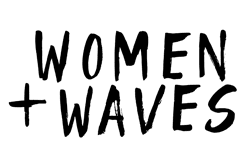
30 Aug Pro Tips On How To Noseride On A Longboard
So, you’ve mastered your cross-step and your toes are edging ever so closer to the nose of your board. That hang five you’ve been dreaming about is just an inch away, but it still feels so out of reach… Hang in there, because it sounds like you’re ready to learn the art of noseriding!

World Longboard Champion Honolua Blomfield in levitation mode. Photo by @mikeitophoto
What is noseriding?
Noseriding is seen as the pinnacle manoeuvre of classic longboarding. Born in the early 1950s, hanging five and ten toes over the nose has become the ultimate test of a surfer’s balance. It involves cross-stepping to the front of your board, then placing the toes of your front foot right over the very tip of your board (for a hang five) then joined by the toes of your back foot (for a hang ten).
The result is a gravity-defying act of gliding that makes the surfer appear to be levitating on water. You can also hang heels (the opposite of a hang ten where your heels hang over the nose and your toes point back to the tail of the board) or stretch five, where you crouch down low and reach your front foot over the nose.

Local longboarder Candice O’Donnell in a stylish stretch five. Photo by @tobybutlerphoto.
Why do it?
Apart from the fact that it’s ridiculously fun, looks impressive and feels incredible to hang out on the nose of your board, noseriding allows you to speed down the line and get through a fast section of the wave.
Okay, so how do you do it?
If you want to progress in longboarding, you’ll want to add some hang fives and hang tens to your repertoire. Here are our top tips to get you gliding down the line with your toes over the nose.
Keen to start longboarding but don’t know where to start? Check out our introduction to longboarding for everything you need to know. And if you’re ready to make your first cross-steps, here are 4 top tips from our surf coach Kirsty on how to cross-step in style.
1.Choose the right board and fin setup
As we said in our previous post on longboarding, longboards come in different shapes depending on the style of surfing you’re into. For noseriding, you’ll want to use a classic single fin noserider. These longboards tend to have 50/50 rails, a flatter rocker compared to high-performance longboards and a kicktail to hold in the wall of the wave while you’re on the nose. The single fin gives you more stability, while the wider front end of a noserider will give you more lift in the wave.

The Classic Noserider by Donald Takayama.
2. Count your cross-steps on land
Before you try to walk on water, practise cross-stepping on the beach. You could even trace the outline of your longboard in the sand for more accuracy. Not only will this get you used to the cross-stepping motion, it will also show you how many steps you need to take in order to reach the nose. With enough practice, you’ll build up enough muscle memory to know when to stop stepping without too much thinking.

Californian longboarder Mele Saili gracefully stepping to the nose. Photo by @greylockwoodphoto.
3. Pick the right conditions
Paddling out in optimal noseriding conditions is especially important when you’re first starting out. Look for waist to chest high waves that slowly crumble, with a light offshore breeze to give a nice wall for noseriding. If you want to hang out on the nose for longer, find a mellow point break with a wave that you can surf frontside (when your body is facing the wave and not the beach). Once you become more confident with longboarding, you can start to go out in waves with a steeper wall to get more speed while noseriding.
4. Feel for the perfect timing
If you’re finding yourself nosediving more than you’re noseriding, it’s probably because your timing is off. You want to be cross-stepping in the top third of the wave so that you reach the nose before the most powerful part of the wave catches up with you and starts pushing you down the line again. Think of your board as a seesaw – you need the tail to be held down in the pocket of the wave to counterbalance your body weight on the nose.
TOP TIP FROM TOP AUSSIE LONGBOARDER ELISE TRIGGER:
“To get a good noseride you need a good setup. You want to come from where the power of the waves is being harnessed (pocket) to get your fin locked in. I’m lucky to of had @thewaxhead to teach me more about this in detail”

Elise Trigger showing us how it’s done. Photo: DAGschwinds Photography
The easiest time to move into a noseride is straight after a bottom turn, where you pivot the board with your back foot over the fin to swing the nose around and direct the board towards the face of the wave. This will make your board move into the critical power pocket of the wave, the top third section. Sometimes you can go straight into a noseride without a bottom turn by angling your board into a steep wall as you take off.

This year’s Boardmasters Women’s Longboard winner Emily Currie hanging five in a critical section. Photo by @ornellahg.
5. Check your body posture is upright
Just like when you’re cross-stepping, for noseriding you want to imagine a string is being pulled up through the top of your head that holds your spine upright. Every surfer has their own style of noseriding, but there are a few general pointers you can use to help you balance:
For hang fives, keep your hands below your shoulders, hold your chest up and out and keep your hips relaxed. Lean back slightly to put more weight into your back foot, keeping your back knee more bent than the front and gripping the board with all your toes. To transition into a hang ten, step your back foot to join your front foot and engage your core to maintain balance.

Hawaiian longboarding legend Kelia Moniz gripping the nose with gecko toes. Photo by @yoshitanaka1
Top tip: Don’t try to hang ten before you can hang five! Progress slowly with small steps first, see how long you can keep five toes over the nose before you lose balance and have to cross-step back. Then you can gradually wriggle those other five toes over too.
If you’re looking for ideal longboarding waves to practise your noseriding, Saunton Sands in North Devon is one of our favourite spots for an easy-breezy session. Further afield, you’ll find perfect peeling point breaks on our Secret Surf Morocco trip and long mellow beach breaks at Playa Carmen with us in Costa Rica.
Wanna be part of the crew? Subscribe to our newsletter to be the first to know about our surf trips, tips and events!



No Comments